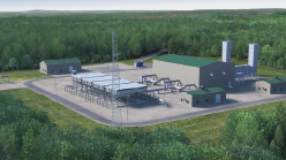Building a natural gas pipeline requires careful review of whether the construction, operation and maintenance of the facility will affect water quality, cultural and historic resources, air quality, threatened and endangered species and many other aspects of the human environment. Numerous local, state and federal agencies are involved in these reviews, and some agencies are called upon to issue permits or clearances in their areas of expertise. These local, state and federal agencies are also involved in the Environmental Analysis or Environmental Impact Statement prepared for the proposed pipeline project under the National Environmental Policy Act.
The purpose of this study is to identify those points in the existing project review processes of key federal agencies where additional interagency coordination could improve the process for both applicants and participating agencies. A better coordinated permitting and certification process would be timelier and more likely to conserve the resources of business and government.
This study found that both applicants and agency reviewers experience problems coordinating the environmental permitting process. Most difficulties encountered during the permitting process occur either during the initial period of planning and execution of field surveys, or during the later period when the project is under complete review by multiple agencies.
It is recommended that, without modifying the scope or procedures of any permit, each agency designate the three to five points that are on the "critical path" for the agency’s review of the project. These critical points should be harmonized among the permitting agencies so that information gathering, preliminary analysis, final analysis, and decision making on the proposed project can result in coordinated resource evaluation and protection.
It is further recommended that federal agencies with key roles in the pipeline construction process enter into an Interagency Agreement to signal to their agencies that coordinated review of natural gas pipeline project applications is an agency objective. To further this objective, the Foundation supports the adoption of an Interagency Agreement among key federal agencies that may participate in project review, before and during the construction of an interstate natural gas pipeline. A form of Interagency Agreement is included in this study, in Appendix A, as an example of what an agreement might include. The Discussion Draft provides for concurrent review of a proposed project, and for submittal of comments by federal agencies within the minimum timeframes suggested by the President’s Council on Environmental Quality.





